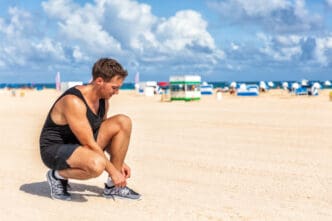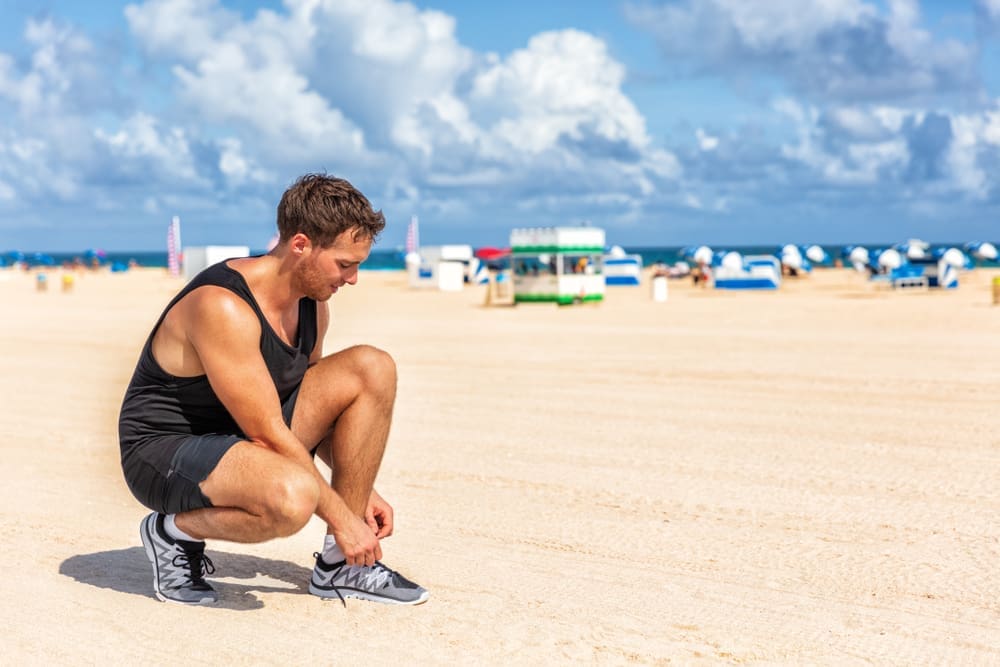A Quick Takeaway
- Miami’s unique environment, characterized by heat, humidity, and diverse running surfaces, poses significant challenges requiring specialized foot care for runners.
- Crucial aspects of foot health for runners include selecting appropriate, breathable footwear and moisture-wicking socks, alongside consistent daily hygiene and blister prevention.
- Maintaining long-term foot health also requires incorporating strengthening and flexibility exercises, proper nutrition and hydration, and knowing when to seek professional medical help.
The Story Behind the Trend
- Miami’s unique environment, marked by relentless heat and humidity, diverse running surfaces ranging from hard concrete to sandy beaches, and exposure to salty air and water, presents significant and specific challenges to runners’ foot health, thereby necessitating a proactive and specialized approach to care for injury prevention and sustained performance.
How to Make It Work for You
- Miami’s unique environment, characterized by high heat, humidity, and diverse running surfaces, creates significant stressors for runners’ feet, increasing susceptibility to issues like blisters, infections, and injuries. This necessitates a highly proactive and specialized approach to foot care, encompassing appropriate footwear, diligent hygiene, targeted strengthening exercises, and proper nutrition. Without such a comprehensive strategy, runners risk chronic foot problems that could severely impact their performance and long-term running sustainability in the city.
The Community View
- The article highlights that Miami’s distinct environment, with its heat, humidity, and varied surfaces, presents unique challenges for runners’ foot health.
- It is recommended that runners prioritize appropriate footwear, diligent daily hygiene, and consistent strengthening exercises to mitigate environmental stressors and improve foot resilience.
- The text advises seeking professional help from podiatrists or physical therapists for persistent pain or warning signs to prevent minor issues from escalating.
For Miami runners, maintaining peak foot health is paramount to sustaining performance and preventing injuries in the city’s unique, challenging environment. From the humid air and scorching pavement to diverse running surfaces like sandy beaches and hard concrete, the demands on a runner’s feet are significant, necessitating a proactive and informed approach to care. Understanding the specific stressors and implementing expert-backed strategies ensures that every stride taken, whether along the scenic MacArthur Causeway or through the vibrant streets of South Beach, is comfortable, efficient, and free from debilitating issues.
Understanding Miami’s Foot Challenges
Miami’s distinct environment presents a unique set of challenges for runners that directly impact foot health. The combination of high temperatures, intense humidity, and varied terrain requires specialized attention to prevent common ailments and support long-term running sustainability.
Heat and Humidity
The relentless heat and humidity in Miami lead to increased perspiration, which can soften the skin on the feet and make it more susceptible to friction, blisters, and fungal infections. Wet feet create an ideal environment for bacteria and fungi to thrive, increasing the risk of athlete’s foot or nail infections. Proper ventilation and moisture-wicking materials become critical defense mechanisms.
Surface Variety
Runners in Miami often transition between vastly different surfaces within a single run. Concrete sidewalks and roads provide a firm, unforgiving impact, while sandy beaches offer a softer, less stable surface that challenges intrinsic foot muscles and can alter gait mechanics. Boardwalks, often made of wood, can present uneven footing and different levels of shock absorption. Each surface type places unique demands on the feet, requiring adaptability and appropriate footwear choices.
Salty Air and Water Exposure
For those who run along the coastline, exposure to salty air and occasional splashes of saltwater can dry out the skin or, conversely, keep feet damp, exacerbating skin issues. The abrasive nature of sand, combined with moisture, can also contribute to skin irritation and increased callus formation. Protecting the feet from these elements is an important consideration for coastal runners.
Choosing the Right Footwear
The foundation of good foot health for any runner, especially in Miami, begins with selecting appropriate footwear. The right shoes and socks can mitigate many of the environmental stressors and biomechanical challenges.
Shoe Selection Criteria
Runners should prioritize shoes that offer adequate cushioning, support, and breathability. Given Miami’s heat, shoes with mesh uppers and good ventilation are essential to allow air circulation and reduce moisture buildup. Consider your foot type (e.g., pronation, arch height) and have a gait analysis performed at a specialty running store to ensure the shoes align with your biomechanics. This personalized approach helps prevent injuries by providing the correct support where it’s most needed.
Shoe Rotation and Replacement
To extend the life of your shoes and provide varying support, consider rotating between two or more pairs. This allows the cushioning to decompress and recover between runs. Running shoes typically need replacement every 300-500 miles, or sooner if you notice significant wear, reduced cushioning, or persistent foot pain. Continuing to run in worn-out shoes is a common cause of foot, knee, and hip injuries.
The Importance of Socks
Never underestimate the power of a good pair of socks. Opt for moisture-wicking synthetic materials or merino wool, which draw sweat away from the skin, keeping your feet dry. Avoid cotton socks, as they absorb moisture and stay wet, leading to blisters and increasing the risk of fungal infections. Seamless designs and anatomical fits can further reduce friction points. Some runners find success with toe socks or double-layer socks for enhanced blister prevention.
The Importance of Proper Foot Care
Beyond footwear, a consistent and diligent foot care routine is crucial for Miami runners. This proactive approach helps manage the effects of heat, humidity, and activity.
Daily Hygiene
Wash your feet daily with mild soap and water, paying close attention to the spaces between your toes. After washing, thoroughly dry your feet, especially between the toes, to prevent fungal growth. Using a clean towel and allowing feet to air out whenever possible can significantly reduce moisture-related issues.
Nail Care
Trim toenails straight across, not too short, and avoid cutting into the corners. This practice helps prevent ingrown toenails, a painful condition that can sideline a runner. If you have thick or discolored nails, consult a podiatrist, as these could indicate a fungal infection or other issues.
Moisturizing and Callus Management
While keeping feet dry is important, the skin itself needs to remain supple. Apply a good quality foot cream or moisturizer daily to prevent dry, cracked skin, particularly on the heels. For calluses, which are natural protective layers, gently file them down with a pumice stone after showering, but avoid aggressive removal, as they serve a purpose. Excessive or painful calluses might indicate a biomechanical issue that needs addressing.
Blister Prevention and Treatment
Blisters are a common runner’s woe, especially in humid conditions. Ensure shoes fit correctly and socks are moisture-wicking. Applying anti-chafing balm or petroleum jelly to high-friction areas before a run can create a protective barrier. If a blister forms, clean the area, drain it if necessary with a sterilized needle (piercing at the edge), and cover it with a hydrocolloid bandage or moleskin to protect it and promote healing. Do not peel off the skin.
Strengthening and Flexibility Exercises
Strong, flexible feet and ankles are less prone to injury and more capable of handling the varied demands of Miami’s running environment. Incorporating specific exercises into your routine can significantly improve foot resilience.
Intrinsic Foot Muscle Exercises
These small muscles within the foot are vital for stability and shock absorption. Exercises like “toe scrunches” (curling toes to pull a towel), “marble pick-ups” (using toes to pick up small objects), and “short foot exercises” (contracting the arch without curling toes) help strengthen these critical muscles. Perform these barefoot regularly to improve foot strength and proprioception.
Calf Stretches
Tight calf muscles (gastrocnemius and soleus) can limit ankle flexibility and place increased stress on the Achilles tendon and plantar fascia. Incorporate regular calf stretches, both with a straight knee and a bent knee, to ensure full range of motion. Holding each stretch for 30 seconds, repeated 2-3 times per leg, can make a significant difference.
Ankle Mobility and Stability
Good ankle mobility is crucial for absorbing impact and adapting to uneven surfaces. Ankle circles (clockwise and counter-clockwise), alphabet drawing with your foot, and using a balance board or wobble cushion can improve both mobility and stability. These exercises enhance the foot’s ability to react to sudden changes in terrain, reducing the risk of sprains.
Nutrition and Hydration for Foot Health
What you put into your body directly impacts the health and resilience of your feet, just like any other part of your body. Proper nutrition and hydration are often overlooked but vital components of a runner’s foot care regimen.
Key Nutrients
A balanced diet rich in vitamins and minerals supports bone density, tissue repair, and overall foot health. Calcium and Vitamin D are essential for strong bones, helping to prevent stress fractures. Protein is crucial for muscle and tendon repair. Anti-inflammatory foods, such as those rich in omega-3 fatty acids (e.g., salmon, flaxseeds), can help manage inflammation and aid recovery from the constant pounding feet endure. Vitamin C supports collagen production, vital for healthy skin and connective tissues.
Hydration Strategy
Staying well-hydrated is particularly important in Miami’s climate, as dehydration can affect muscle function and skin elasticity. Drink water consistently throughout the day, not just during runs. Electrolyte-rich beverages may be beneficial for longer runs or particularly hot days to replenish lost salts. Proper hydration helps maintain skin integrity, reducing the likelihood of blisters and cracks, and supports joint lubrication.
When to Seek Professional Help
While many foot issues can be managed with diligent self-care, knowing when to consult a professional is key to preventing minor problems from escalating into chronic conditions. Early intervention can often lead to faster recovery and better outcomes.
Recognizing Warning Signs
Do not ignore persistent pain, swelling, numbness, tingling, or changes in skin color or temperature. If a blister becomes infected, or if you experience pain that doesn’t subside with rest and conservative measures, it’s time to seek expert advice. Any sudden, sharp pain, especially after a specific incident, warrants immediate attention.
Types of Specialists
A podiatrist specializes in foot and ankle care and can diagnose and treat a wide range of conditions, from ingrown toenails and fungal infections to plantar fasciitis and stress fractures. For biomechanical issues or persistent pain, a physical therapist can provide gait analysis, prescribe targeted exercises, and offer manual therapy. In some cases, a sports medicine doctor may be the appropriate first point of contact to get a comprehensive diagnosis and referral.
By integrating these expert tips into their routine, Miami runners can proactively safeguard their feet against the unique challenges of the local environment. From meticulous shoe selection and daily hygiene to targeted strengthening and smart nutrition, a holistic approach ensures that every step taken contributes to a long, healthy, and enjoyable running journey in the Magic City.







